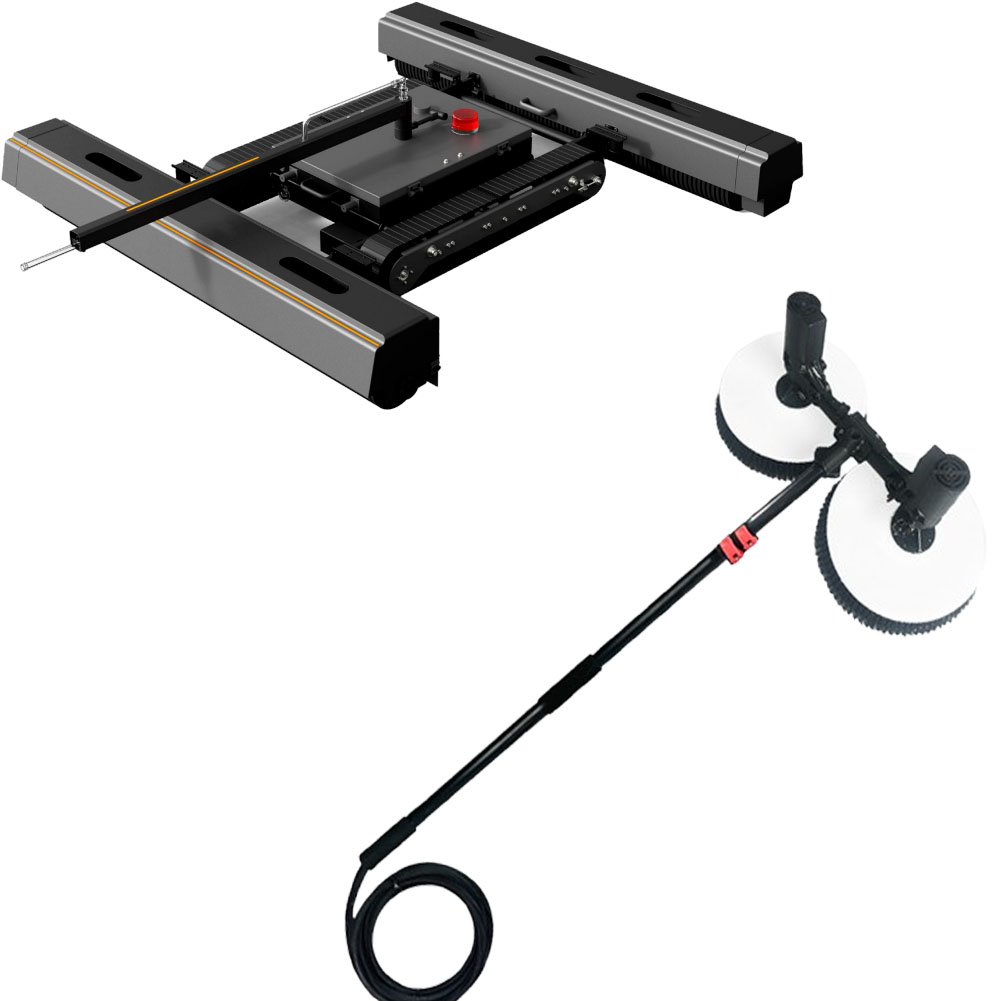Keeping solar panels clean is essential for maintaining their efficiency and energy output. To address solar panel maintenance challenges, solar panel cleaning systems have continued to evolve, with solar panel cleaning robots and solar panel cleaning machines emerging as the two most popular options.
In this article, we will compare different solar panel cleaning systems to help you determine which solution—robots or machines—best suits your needs.

Why Use a Solar Panel Cleaner?
Solar panels lose efficiency when covered in grime. Regular cleaning ensures:
✔ Higher energy output
✔ Longer panel lifespan
✔ Reduced manual labor
Traditional methods (hose washing, manual scrubbing) can be inefficient or even damage panels. That’s where solar panel cleaner robots and machines come in.
Solar Panel Cleaner Robot vs Machine: Key Differences
Solar Panel Cleaner Robot




Best for:Residential systems, commercial rooftops, and remote installations.




Best for:households or small photovoltaic power stations.
How to choose?
Choose robots: If you need high-frequency cleaning, large-scale arrays or unmanned management (such as desert power stations, industrial and commercial rooftops).
Choose a cleaning brush: If your system is small in scale, has a limited budget, or only requires occasional cleaning (such as a home photovoltaic system).
Additional suggested mixed solution:
Large-scale power stations can be equipped with robots (for daily maintenance) and manual cleaning brushes (for key areas).
Although robots are expensive, they can increase power generation by 5% to 15% in the long term. The investment payback period needs to be calculated.
Common problems
Why do you damage solar panels when brushing snow?
- Brushing snow may cause scratches or abrasions on the surface of the solar panel due to the use of excessively hard brushes or tools.
- Brushing the snow too hard may also cause an impact on the solar panel, resulting in cracks or breaks.
Is there any other way to clean up solar panels when they are covered in snow other than brushing them?
Warm water can be used to spray on the surface of the solar panel to quickly melt the snow and rinse it away. However, care needs to be taken not to overheat the water to avoid deforming or damaging the PV panels.
What should I do if my solar panels have been damaged by snow brushing?
Immediately stop using the damaged solar panel and contact a professional for overhaul.
What kind of brush should I use to clean the solar panels?
Clean with soft brush and other tools, avoid using sharp objects.
Final Verdict: Best Solar Panel Cleaner System
Both robots and machines with electric brush technology significantly improve solar panel efficiency. Your choice depends on:
Scale of installation(residential vs. industrial)
- Budget(robots cost more upfront but save labor)
- Cleaning frequency(automated robots work best for regular maintenance)
If you want a hands-off, automated solution, go for a solar panel cleaner robot.
If you need heavy-duty cleaning for large setups, a solar panel cleaner machineis the better pick.
Pro Tip:Look for models with self-cleaning brushes, water-saving modes for maximum efficiency!
